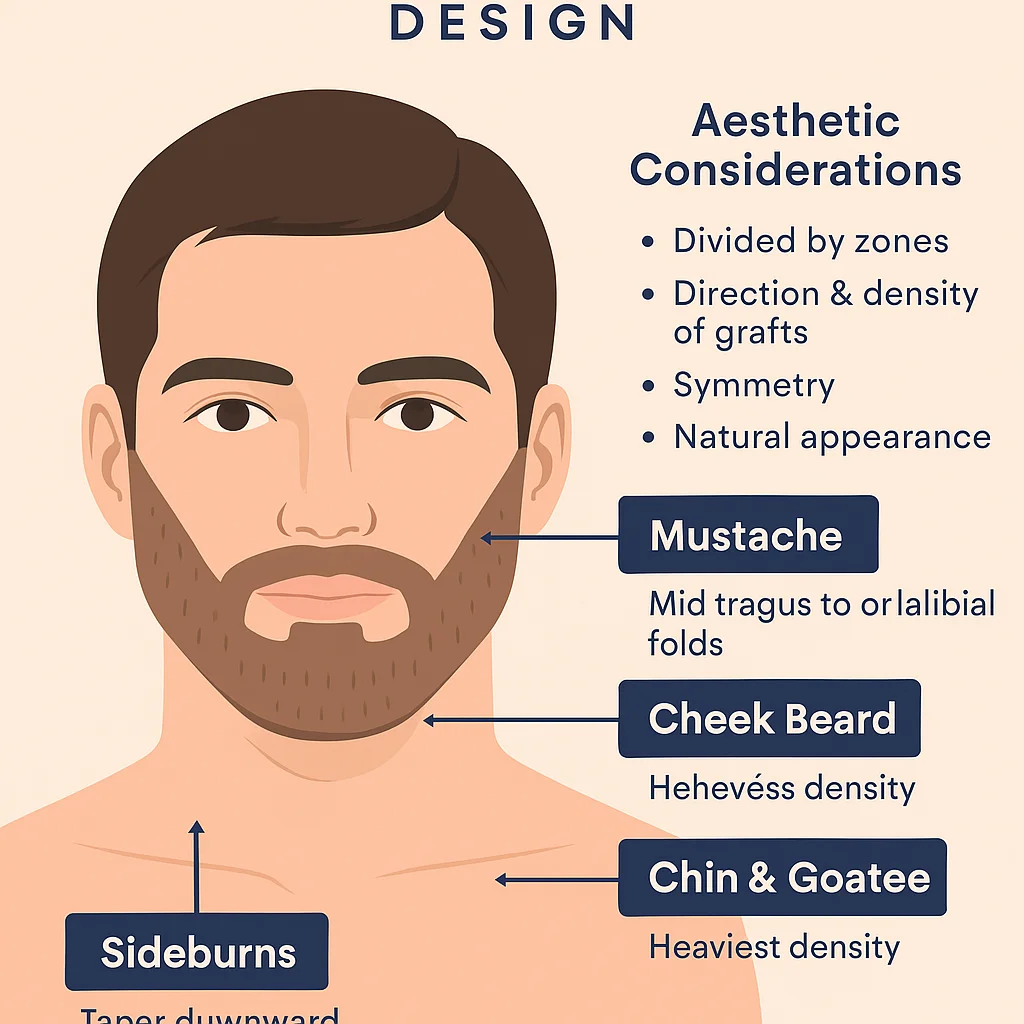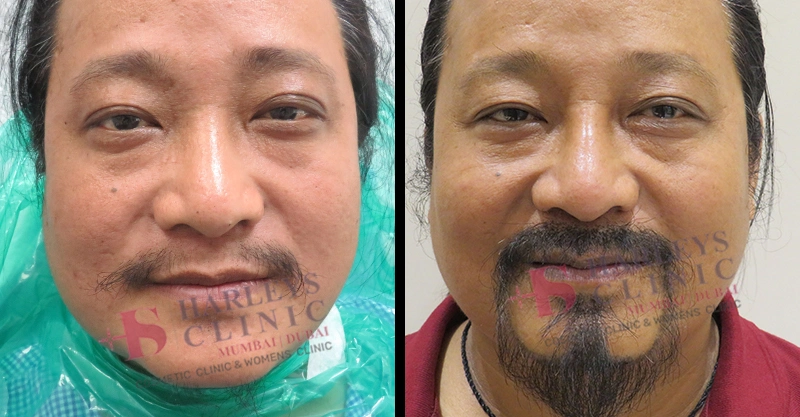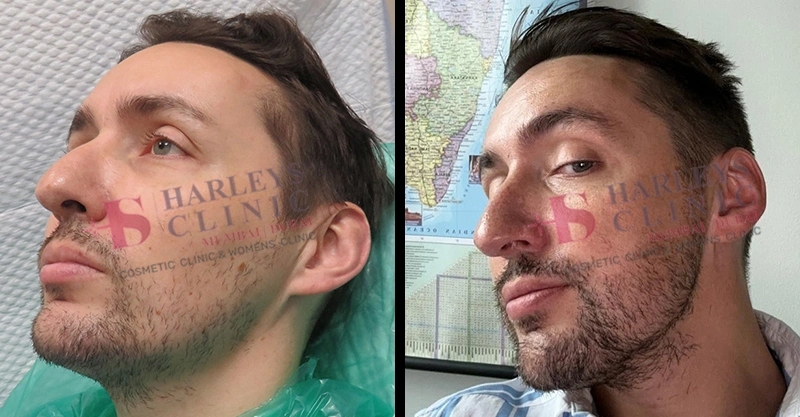What is a beard hair transplant?
A beard hair transplant is a cosmetic procedure that restores facial hair in areas with patchy or no growth. Using the FUE (Follicular Unit Extraction) technique, hair is taken from the scalp (usually the back of the head) and implanted in the beard area.
Who is a good candidate for beard transplant?
Ideal candidates include:
- Men with patchy or thin beard
- Individuals with scarring, injuries, or burns
- Transgender (F2M) individuals seeking beard restoration
- Anyone looking to improve beard fullness or shape
Is the procedure painful?
The procedure is done under local anaesthesia, so it’s well tolerable experience. Patients may experience mild discomfort or tightness after the procedure, which subsides in a few days.
How long does the beard transplant procedure take?
The procedure typically takes 4–6 hours, depending on the number of grafts required. It is performed as a day-care surgery.
How many grafts are needed for a full beard?
On average:
- Full beard: 2000–3000 grafts
- Cheek beard or mustache only: 400–800 grafts
- A personalized plan is made based on your face shape and beard goals.
How long does it take to see results?
- Initial shedding: 2–4 weeks post-surgery
- New growth starts: 3–4 months
- Final results: Visible by 9–12 months
Will the transplanted beard hair grow like natural beard?
Yes! The transplanted hair behaves like natural facial hair — it can be shaved, trimmed, or styled just like the rest of your beard.
Are the results permanent?
Yes, the results are permanent. Since the transplanted follicles come from the permanent donor zone, they continue to grow for a lifetime.
What is the recovery time?
- Mild swelling or redness may last 2–3 days
- Most patients resume work within 2–3 days
- Avoid shaving for 10 days
Are there any risks or side effects?
Side effects are rare but may include:
- Swelling or redness
- Folliculitis (temporary)
- Minor scabbing or crusting
- Misdirected hairs (if not planned well)
All of these are minimized under an experienced surgeon like Dr. Sumit Agrawal.
How much does a beard transplant cost in Mumbai?
Cost of Beard transplant at Harleys Clinic ranges between ₹100,000 to ₹1,50,000, depending on the graft requirement and design complexity.
Why choose Harleys Clinic for beard transplant?
- Expertise of Dr. Sumit Agrawal, MCh Plastic Surgeon
- Natural and artistic beard design
- Scar-less FUE technique
- Trusted by international patients
- High graft survival rate





